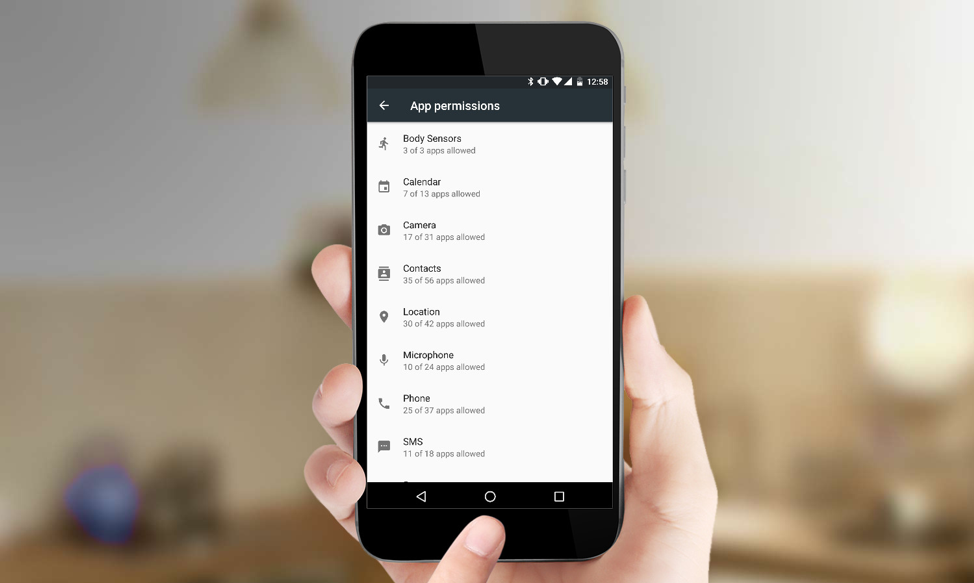Contents
Gone are the days when the users remain unaware of what the recently downloaded Android application going to do in the background. Which information- contacts, email address, location, microphone, or camera is the app accessing?
Well, it completely conforms to the rules for the application to access the device features for performing the desired task, for instance, the ride-hailing app accessing user’s location data or messaging app accessing the contacts. It’s fair.

But, some apps access excessive information and invade the user’s privacy. When the users remain uninformed about the private data that the app is collecting, it could potentially affect the user’s data and the operations of other apps. Under the microscope, the users must know what data the apps are gathering and looking for.
With Android 6.0 or Marshmallow release, Google fulfills the user’s need with a new permission model. It has supercharged the users with control of deciding what type of data the app can access from the device features. It becomes mandatory for the apps to get the user’s permission at the runtime before accessing data from the phone memory.
Asking permission is a good practice, but the sheer transparency has adversely affected the number of downloads. It’s so because when the app requests too many permission it makes the users feel wary about the app. Consequently, the app permissions act as double-edged sword wherein the transparency delights the users and risky permissions or bundle of permissions make the users uncertain about the app. That’s why developers prefer to keep the minimum permissions during the Android App Development.
It’s not just a single practice that developers have to take care of while working with an Android app development company; instead, several practices must be followed during the permission request integration for protecting sensitive data with restricted access and keeping the users happy. They are:
#1 Integrate just essential permissions
When the permission request pop-up in front of the users, they read the permission, think about the permissions’ necessity, read the privacy policy, and then make the decision. In the whole process of decision-making, the users have to ponder a lot even before using the app. When the app is bombarding the permission requests one after another, it puts off the user at the very beginning and they are less likely to use the app. The best practice involves minimizing the number of app permissions by keeping just necessary functionalities in the app.
The alternatives of app permissions include using intents for the data that infrequently require access. A few system intents are provided by the Android system that enables the apps to access the user’s data without requiring permission.
#2 Don’t overwhelm with concurrent permission requests
Just the app installation doesn’t signal the app success. It’s so because when the app is not able to make the users browse and perform the desired action, then topping the charts is impossible. The users cannot onboard the journey unless they provide the requested permissions to the app. When the app is requesting a bundle of permissions at once as the app is launched, it’s overwhelming them and making them exit. The best practice includes requesting the permissions as they are required in the app.
For instance, in the ride-hailing app, it makes perfect sense to ask permission for location access, but if the app is also asking for social media permission to allow the users to share the ride experience on social channels, it makes the users think twice. Don’t ask such permissions simultaneously that will surprise the users at firsthand.
#3 Pay heed to library permissions
Many times, the developers include the libraries during app development, but they are unaware of the permission requirements that the library inherits with itself and at a later stage, these libraries request permissions from the users. The users think that the permission request is coming from the app in place of the library.
The developers should be choosy for the libraries they are using and the permission request that will come from these libraries. They must review and select the libraries and third-party SDKs that are not asking too much permission. Knowing what libraries to include, the permissions they require, and what the permissions are used for, is a must-have for the developers.
#4 Reveal the purpose for permission request
The users always think- why the app needs the device permissions that it’s requesting before granting the data access permission. It’s a top point in the privacy checklist. That’s why the developers should explain why the app permission is needed.
A user study has disclosed that the user’s readiness to grant specific information counts on the purpose associated with it. They are interested in knowing whether the permission for data access will be used to support the app’s core functionality or shared with some advertising network.
To address the user’s concern, when the system shows the dialog box for the permission that app requests, it must define why the app needs permission.
#5 Make system accesses vivid
The users always remain suspicious about activities going in the background and the data that may be secretively used by the apps. Sometimes, the access enabled in apps through permission granting keeps accessing the data, which must be explicitly defined to the users.
The developers should configure the continuous indications that signal the users about access capabilities- when the app is using the data and when it’s in the null state.



